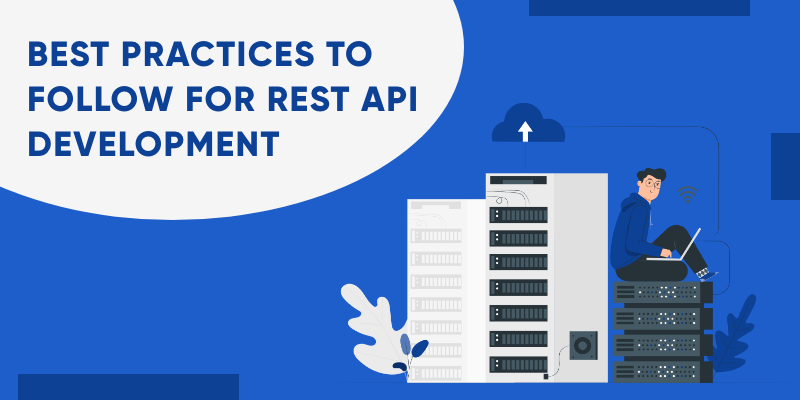In 2025, developing robust REST APIs goes beyond coding basic endpoints — it requires building secure, scalable, and mobile-optimized systems that support Android and iOS apps. With more businesses and consumers relying on mobile applications for everything from e-commerce to healthcare, APIs must meet evolving digital expectations, follow the latest SEO best practices, and comply with Google’s E-E-A-T (Experience, Expertise, Authoritativeness, and Trustworthiness) standards.
Whether you’re building APIs for a cross-platform mobile app, enterprise software, or a digital service platform, these updated practices will help you stay ahead in a fast-moving ecosystem.
1. Use RESTful Naming Conventions and HTTP Standards
Proper endpoint structuring is foundational. Use nouns to represent resources (e.g., /users, /orders) and stick to standard HTTP methods — GET (fetch), POST (create), PUT/PATCH (update), DELETE (remove). Avoid action-based verbs in URLs and return consistent status codes like 200 (OK), 201 (Created), 400 (Bad Request), 401 (Unauthorized), and 404 (Not Found). Stick to JSON formatting for request and response bodies.
Clear, predictable structure helps developers integrate APIs faster — especially in mobile environments where stability and clarity are critical.
2. Implement API Versioning
As your application evolves, API versioning ensures backward compatibility. URI-based versioning (e.g., /api/v1/) is the most commonly used approach in 2025. It allows multiple app versions — Android, iOS, and web — to function without disruption when updates are deployed.
This is especially useful for large-scale mobile apps where legacy users still depend on earlier versions.
3. Secure Your APIs With Modern Authentication
Security remains a top priority. Every API must use HTTPS/TLS to encrypt communication. Authentication should be token-based, such as OAuth 2.0 or JSON Web Tokens (JWT), and roles/permissions should be enforced at the API level.
For mobile apps, especially, implementing multi-level security—such as biometric authentication on the client and OAuth on the backend—adds trust and prevents data leaks.
4. Optimize for Performance and Mobile Responsiveness
REST APIs in 2025 must cater to fast-paced mobile interactions. Support pagination, filtering, and field selection to reduce payload size and response times. Use gzip compression and caching headers (e.g., ETag) to accelerate repeated requests.
Minimizing latency for users on 4G/5G networks directly impacts mobile app performance, Core Web Vitals scores, and SEO rankings.
5. Prioritize Error Handling and Monitoring
Standardized error responses are essential for debugging and trust. Always return structured error messages with clear status codes and explanations. Implement logging and monitoring tools to track failed requests, latency spikes, and unauthorized access attempts.
For example, an error response like:
{
"status": 404,
"error": "User not found",
"message": "No user exists with the specified ID."
}
This clarity helps developers quickly identify and resolve issues in Android and iOS applications.
6. Use Clean Architecture and Maintainable Code
Clean architecture separates business logic from controllers and data access. A well-organized API backend includes modular components, reusable services, and domain-driven design. Structure your project directories to distinguish between core services (domain/), external APIs (infra/), and routing (api/).
This makes the codebase scalable and easier to update across all app versions.
7. Create Developer-Friendly Documentation
High-quality documentation reflects professionalism and boosts trust. Use OpenAPI (Swagger) for self-explanatory, interactive docs. Include sample requests, responses, authentication steps, and error examples.
This is especially crucial for third-party developers building Android or iOS apps using your API. Clear documentation improves onboarding, reduces support queries, and enhances your API’s credibility.
8. Integrate GraphQL, Webhooks, and AI Features
While REST remains dominant, many mobile apps now combine REST and GraphQL to support custom data queries. GraphQL reduces over-fetching and under-fetching — ideal for complex UI elements on mobile.
Webhooks are another essential feature for real-time updates — they notify apps instantly when an event occurs, rather than requiring constant polling.
In 2025, some businesses also integrate AI to detect anomalies, optimize endpoints, or power intelligent API responses (e.g., chatbot recommendations in a mobile app).
9. Ensure Compliance with Data Regulations
APIs must comply with laws like GDPR, CCPA, and HIPAA (where applicable). Include user consent mechanisms, log access events, and provide data deletion/export features.
Modern mobile users demand control over their data. Compliance builds brand trust and ensures long-term platform sustainability.
APIs enable developers to communicate with the data; therefore, they have become easier and more comfortable for developers. Well, it is essential to ensure that REST APIs are well-designed to avoid several difficulties for developers rather than enhancing the user experience. Hence, it becomes important to follow best practices for REST API development to cater to your users with better efficiency and a great user experience.
API’s set of rules determines the communication or how the apps or devices connect with each other. Tech giants such as Facebook, GitHub, and Netflix have become the leaders of this show because they are hiring developers with open arms to exploit their data by using APIs.
What Is REST API?
REST stands for Representational State Transfer. In 2000, Roy Fielding created a software architectural style to guide the design of architecture for the web.
It is called RESTful when any API (Application Programming Interface) follows the REST design principle.
REST API is also known as RESTful API which can be simply defined as an application programming interface. It is a medium for computers to communicate over HTTP (Hypertext Transfer Protocol) in the same way clients and servers communicate.
Find Some Key Features Of REST API

Before getting into the best practices for the RESTful API design, let’s first have a look at the key features of REST API:
Easy To View And Read
It becomes easier for developers to read and comfortably work with a precisely designed API. Its functions and resources are remembered by developers while dealing with it constantly.
Outright And To The Point
A comprehensive API enables developers to make potential apps against the data hazard revealed by you. Therefore, most of the API developers don’t rush to complete the entire project simultaneously but rather work on the existing APIs.
Hard To Misuse
By executing and integrating your API with a sharp and clean design, you can reduce some of the possibilities of writing code. Additionally, it provides significant feedback without giving tough instructions to the end-user.
10 Best Practices To Follow For REST API Development
You must follow a few of the best REST API design and development practices to ensure your API users’ life is easy and precise. Let’s have a closer look at some of the best practices to follow while designing and developing REST APIs:
Clear And Concise Documentation
It is essential to have complete and clear documentation. Frequently, based on the API definition documentation is produced automatically. Also, you have to make sure that the documentation can be easily understood by people with less or no experience.
You need complete documentation so it can help users learn security, authentication, and error management. Furthermore, it offers engaging tutorials, guides, and easy-to-use resources. Comprehensive documentation makes it simpler for users to use your API.
Utilizing JSON As A Data Format
JSON is one of the most commonly used data formats but you can also use other formats like XML, CSV, and HTML. JSON syntax makes data reading easy for humans.
It is very easy to use and provides quick and easy data assessment and execution. Moreover, it contains an extensive array of supported browser compatibility.
Error Management
It is important to manage the errors smartly for reducing confusion for every API user.
This returns the HTTP response codes that explain the nature of the mistake that occurred. The API maintainers get ample data from it to assess the source and reason behind the issue.
Leave your system unmanaged if you want to keep it error-free. Hence, the API customer needs to deal with errors. Here are some basic error HTTP status codes:
404 Not Found
This means that there are no resources.
403 Forbidden
This implies that an improper user has no permission to use a resource even if he/she gets verified.
401 Unauthorized
This means that the user is not authorized to employ a resource. Generally, it goes back if a user does not get verified.
400 Bad Requests
This implies that the client-side input has been unsuccessful in documentation or validation.
503 Service Unavailable
This marks that something unnecessary and unexpected action occurred on the server-side; for example, system failure, part failure, server overload, etc.
502 Bad Gateway
This denotes a null or invalid response from a crucial server.
500 Internal Server Error
It’s a basic server error.
Optimizing For Human Readers
API’s should be easy to understand and use for humans. You can also use some other things other than JSON to make your APIs easy to understand and use:
- Utilize clear and easy naming systems with no abbreviation.
- Utilize nouns rather than verbs in HTTP methods.
- Have easy-to-understood and simple descriptions for error management, along with standardized error codes.
- Utilize plural nouns for collections according to the accepted norms.
API Versioning
API versioning helps developers to make changes in specific actions or data structures.
You can also use more than one API version if your project increases with time and in size. But the benefit is that this enables developers to create more enhancements and changes in their service alongside holding a part of API users that are slow in accepting new changes or not ready to change.
We get mixed feedback on whether we should add an API version in the URL or a header. Generally, it should be placed in the header. But, the version must be present in the REST API URL.
This makes sure the search of the browser across different versions, offering an easy and smooth experience of development.
Generally, an API is variable and unstable. You can avoid the change by checking the ways of dealing with the change. Scheduling a well-documented and declared depreciation every month is a great practice for plenty of APIs.
Allowing Data Filtering, Sorting, Field Selection, And Paging
Handling a massive database is quite tough. Retrieving just the data that was asked for without showcasing the whole database is one of the most challenging aspects for making sure a secure connection with API.
You should use a filter for doing this so it can just return the data that meets the request.
Moreover, it saves massive bandwidth size on the client-side.
With the growth of your database, the necessity of data filters also become more essential. REST API provides a variety of filtering options:
Filtering
This helps in checking results using particular search parameters like country, creation data, etc.
GET /users?country=US
GET /users?creation_date=2021-09-20
Sorting
This enables you to sort out the results in ascending or descending format using your chosen parameter like dates.
GET /users?sort=birthdate_date:asc
GET /users?sort=birthdate_date:desc
Field Selection
This feasible REST API development function enables developers to ask for just a particular of the accessible data for a specific object.
Therefore, if the object you are requesting has lots of fields like name, surname, birth date, phone number, email ID, and you just need a few ones, simply use field selection for mentioning the ones you need to add to the response.
GET/ users/xyz?fields=name,birthdate,email
Paging
Use ‘limit’ for checking the results in a particular number. Moreover, it uses ‘offset’ for informing which section of the whole results is showcased.
GET /users?limit=50
GET /users?offset=3
API Keeping Resource Nesting Limited Versioning
Resource nesting is used to pair two functions that share a similar hierarchy or are associated with each other. If you consider an online store as an example, ‘orders’ and ‘users’ are resources under a similar category.
/users //list all users
/users/xyz //specific user
/users/xyz/orders //list of orders that belong to a specific user
/users/xyz/orders/0001 //specific orders of a specific users order list
Nesting is an effective practice for the relevant pairing of resources. Its excess use by some developers reduces its appeal.
Also, it produces complex dependencies that a basic developer or user cannot understand properly. Hence, using your resource nesting efficiently is one of the best practices for REST API development
Nesting is an effective practice for the relevant pairing of resources. Its excess use by some developers reduces its appeal.
Also, it produces complex dependencies that a basic developer or user cannot understand properly. Hence, using your resource nesting efficiently is one of the best practices for REST API development
Enhancing API Security
Another great way of creating APIs Is by using the present security frameworks like TLS and SSL. The SSL certificates can create a secure connection by offering a private and public key.
You cannot get an assurance of whether your sensitive data like financial or medical info is secured properly until and unless you don’t have an encrypted connection.
TLS is also known as the modern version of SSL’s offering better security and protection. One of the main API security practices is regular testing. You can use these 2 necessary tests:
Penetrating Testing
This test decides the exposure of APIs to a real cyber attack. The tester looks for susceptibilities that might be misused by the hackers.
Fuzz Testing
This test is useful for checking how APIs respond to the unnecessary or invalid input for finding errors or flaws in the code.
Ultimately, rate limiting can easily prevent DoS (Denial of Service) attacks where excessive requests ruin an API’s basic functionality.
Restricting the number of requests per user for some time can safeguard your API from such attacks.
Caching Data In Frontend
You can simply use catching instead of asking for data various times. An amazing benefit of the catch is that the users receive data even more quickly. However, the users may get outdated data also.
Also, this may cause issues while fixing in production environments if something wrong occurs as we see outdated data constantly.
Exploiting Safe Methods
Some of the safe tactics are HTTP methods that restore the precise resource representation. The strategies like HEAD, GET, OPTIONS, and TRACE is considered safe.
This suggests that they can usually retrieve data without modifying a resource’s condition on the server. You should also avoid the use of GET to erase the content.
You can generally execute these methods but a problematic situation arises when the HTTP specifications are violated. Hence, use HTTP methods according to the action you should carry out.
Final Words – REST API Development
You can achieve your targets in REST API development with the above-mentioned best practices and also ensure that your application is safe and easy to use. But, sometimes these practices become difficult to achieve. You can create successful APIs with the help of an API management platform with very less or no knowledge of coding easily.
If you are looking for engineers proficient in API development, then here we are with the highly skilled mobile app developers for hire. Let us know about the API’s requirements for your project. Get in touch with us now!
REST API Development in 2025
What are the most important REST API features for mobile apps in 2025?
Mobile-first APIs should support fast data responses, clear error handling, filtering, pagination, and secure authentication. Features like offline sync, caching, and GraphQL integration are also valuable.
Should I use REST or GraphQL for my mobile app?
Use REST for simplicity and CRUD operations. For apps with complex, dynamic UIs needing multiple resources in one request, GraphQL is ideal. Many apps now use both together.
How can I secure my API for Android and iOS apps?
Use HTTPS, JWT or OAuth 2.0 authentication, rate limiting, and input validation. Regular security audits and monitoring tools also help prevent attacks.
What is the best way to document a REST API in 2025?
Use OpenAPI/Swagger for interactive, machine-readable documentation. Include code samples, status codes, and authentication guides for easy developer onboarding.
Why is versioning important in REST APIs?
Versioning allows existing mobile clients to continue functioning even after backend changes. It prevents breaking changes and supports a stable user experience.
How does REST API design affect SEO and E-E-A-T?
While APIs themselves aren’t indexed, they support mobile-friendly architecture. Clean structure, speed, reliability, and security enhance the overall experience, which indirectly supports SEO and trust signals.
What performance optimizations are critical for REST APIs in mobile applications?
Use response compression, caching strategies, payload minimization, and efficient database queries. These reduce API load times and improve mobile user satisfaction.



